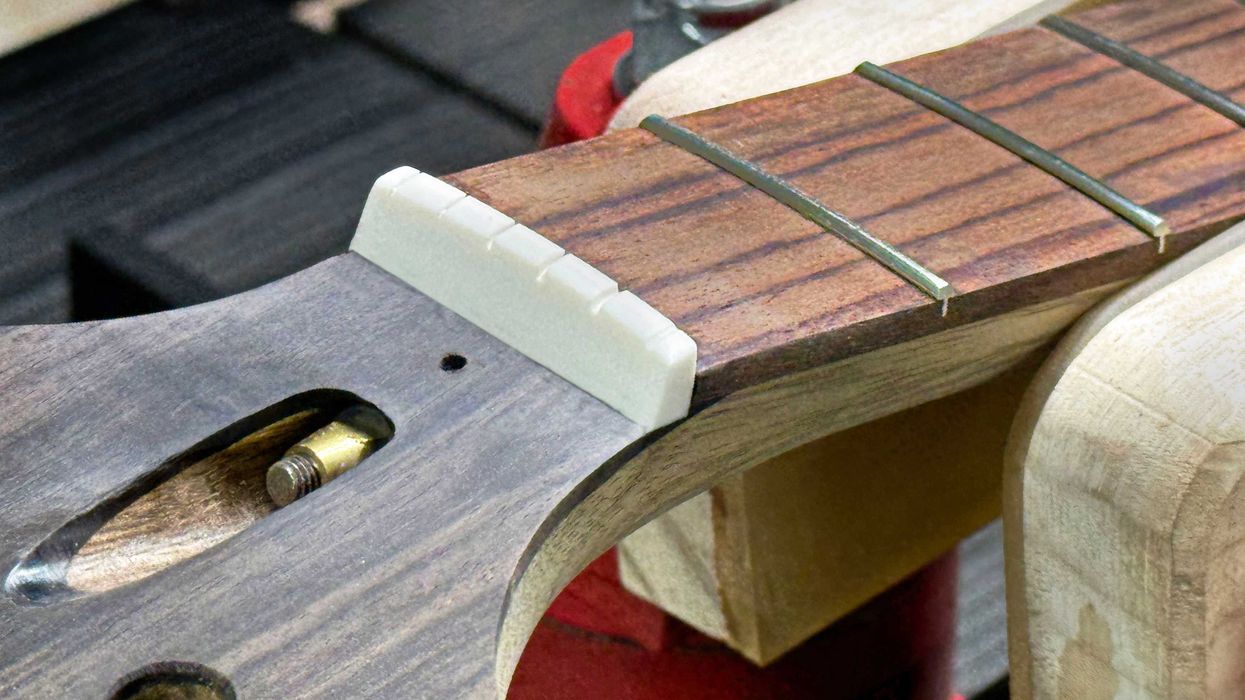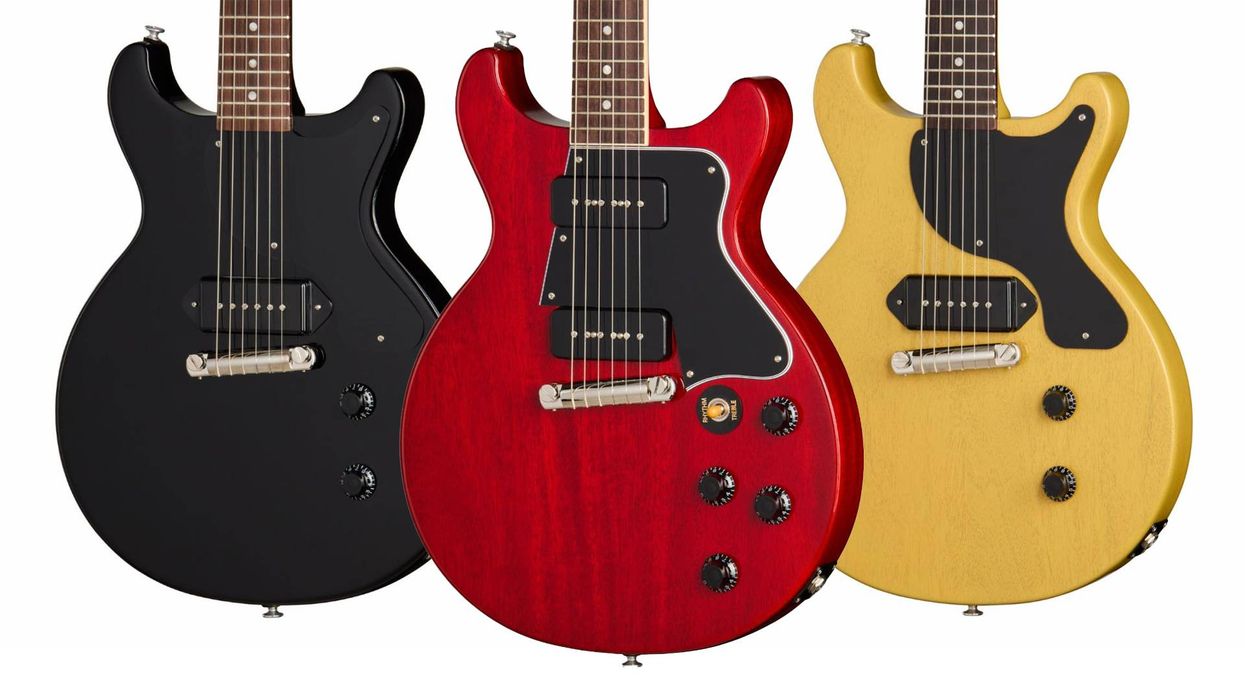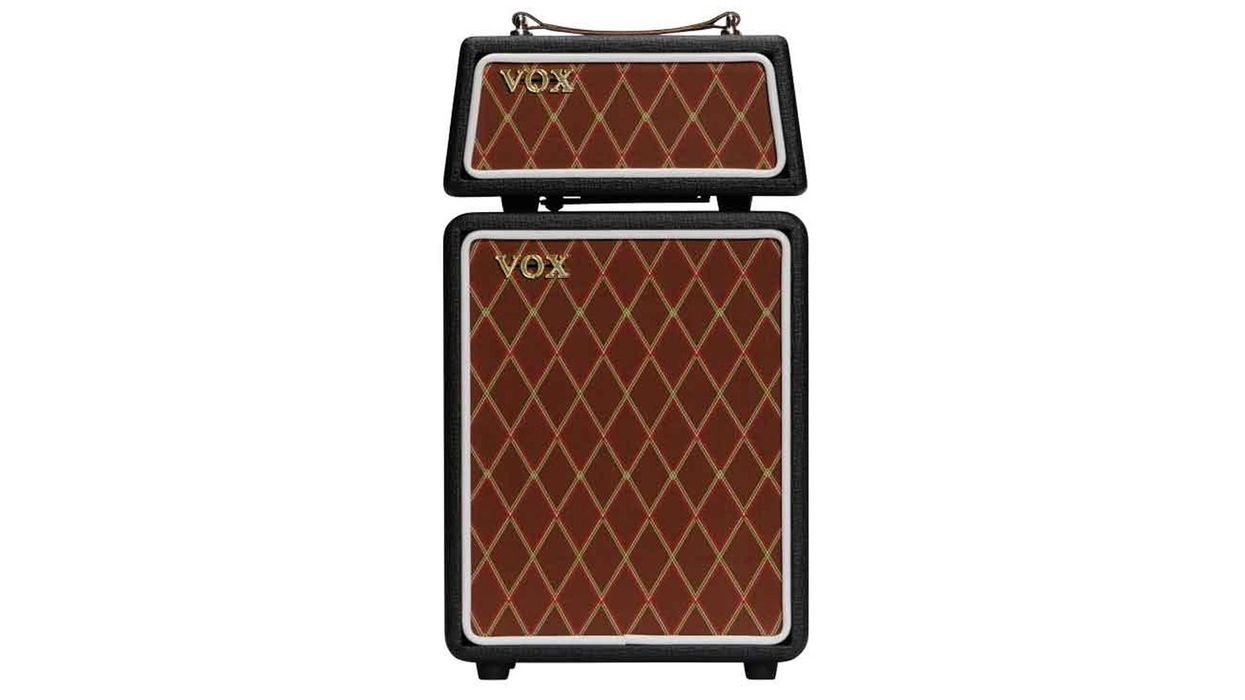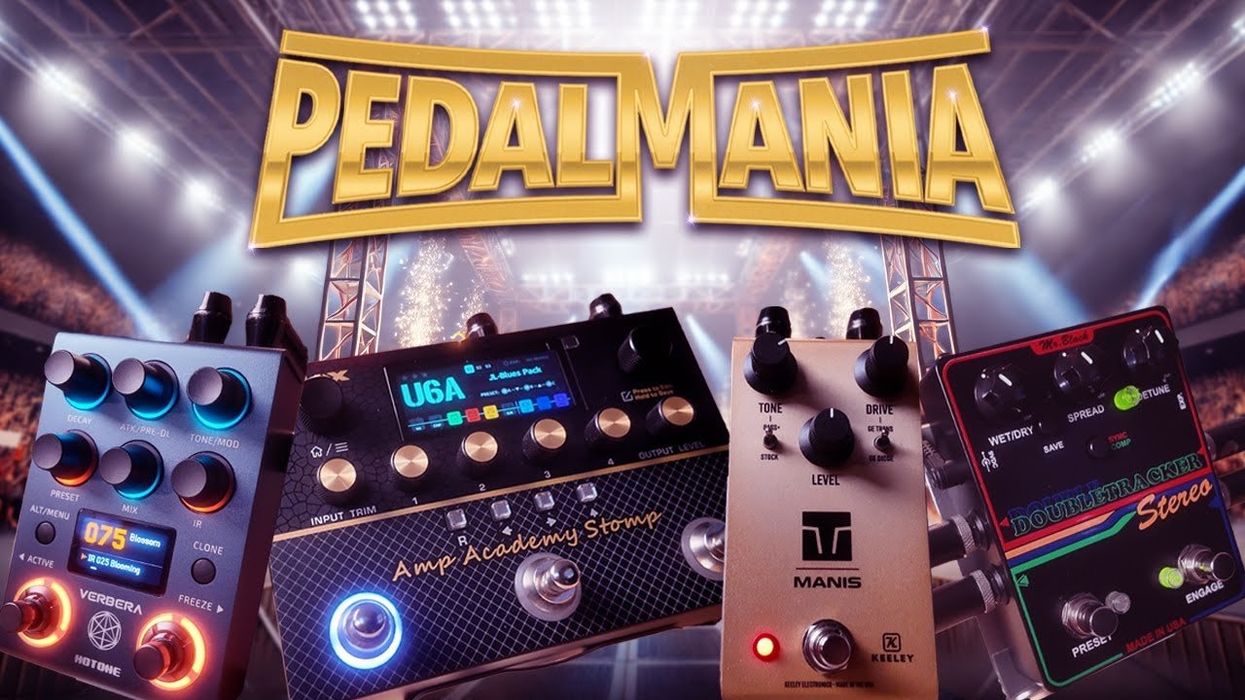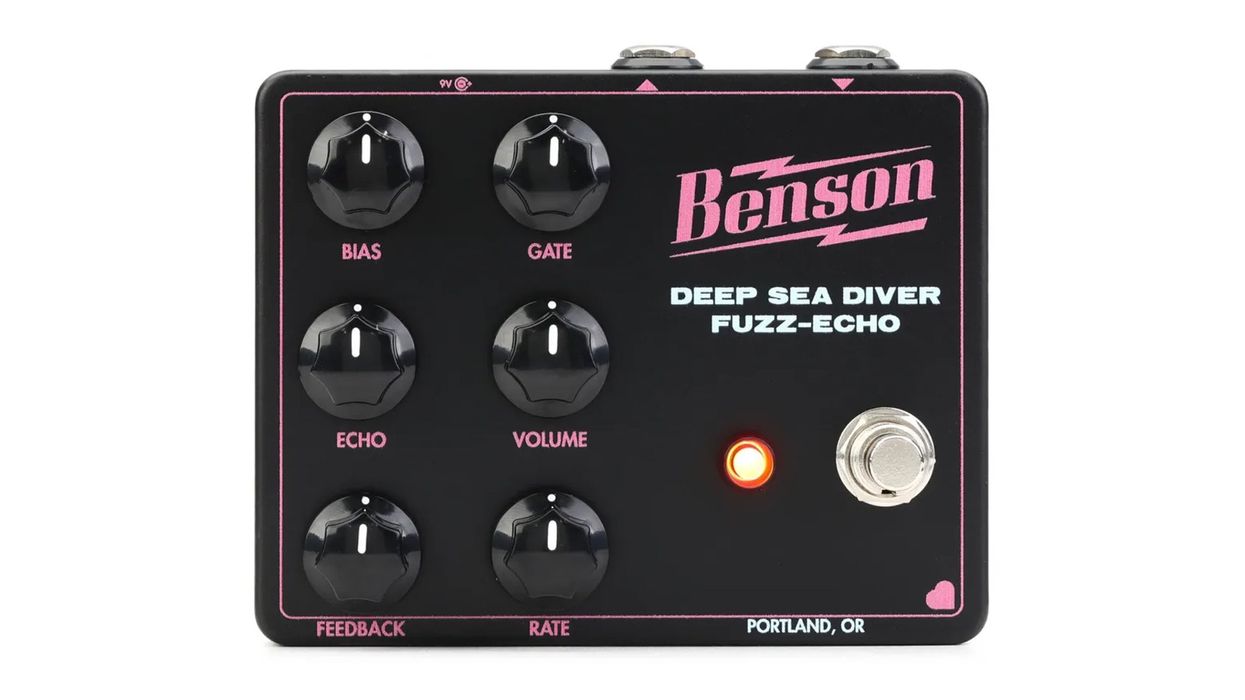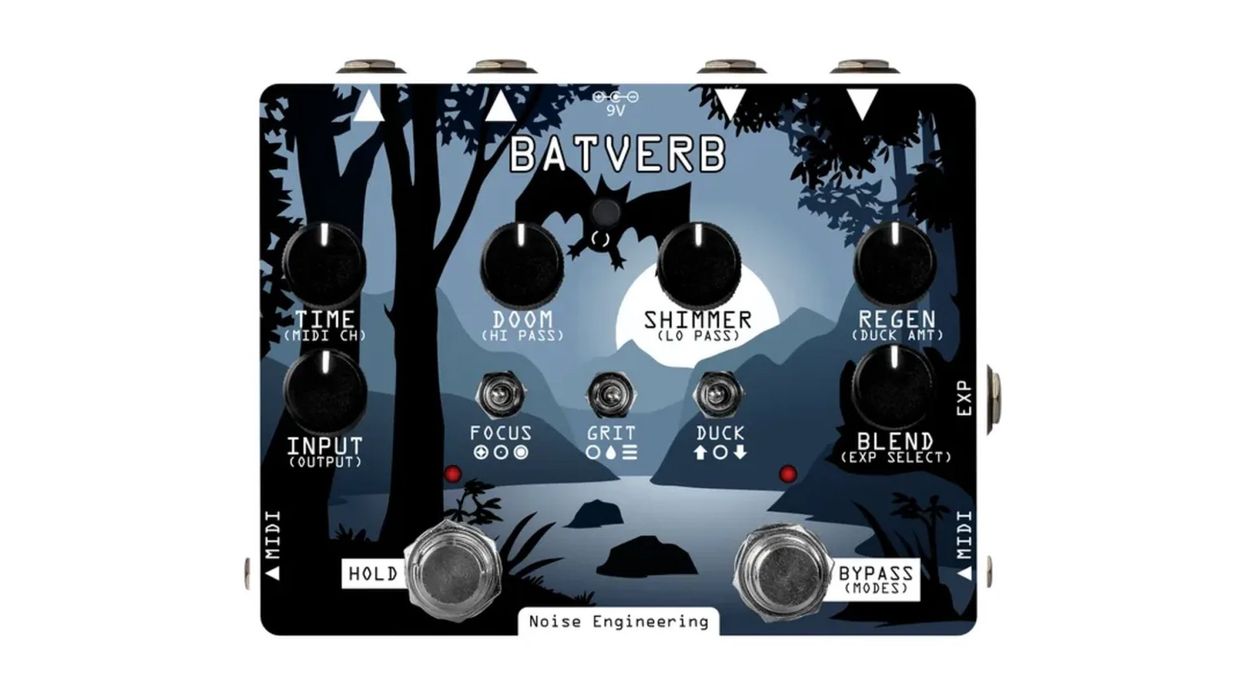A lot of classic-car-heads (a certain Neil Young among them) believe the best way to ensure a future for 20th-century automobiles is to electrify them—to mate the designs of the past with technology of the present and future. In a way, Fender’s Tone Master modeling amps, which use digital processing in 1960s-style black-panel cabinets, are products of parallel thinking. Tube amps may not yet be an endangered species, nor CO2-spewing threats to the environment. But these days, you don’t need a big Twin Reverb cabinet to get a passably modeled representation of a Twin Reverb’s sound—just like you don’t need a 1959 Lincoln to get to work. Still, if you’ve spent most of your guitar-playing life in the analog realm, find inspiration in the company of vintage design, and never want to think about a tube change ever—well, then stuffing a little processor in a big, old-school cabinet makes perfect sense.
What’s cool and convenient about the Princeton Reverb Tone Master, of course, is that it’s not big at all. Nor is it heavy. Shunning a tube circuit means it weighs just 20 pounds—even with a ceramic, vintage-style Jensen C10R 10" speaker. And as far as digital-meets-mid-century design convergences go, you won’t find many examples that are more fun and practical.
Blink and You’ll Miss It
Just like a ’60s black-panel Princeton Reverb, the China-built Tone Master version is a slyly cool piece of kit. It’s small enough to go missing in the shadowy corners of a stage, save for the telltale glow of Fender’s signature jewel lamp. When situated more conspicuously, though, the Princeton Tone Master is the handsome essence of amplifierness. And if you’re not looking too closely, it’s easy to assume you’re plugging into a tube version. The control layout is the same, and apart from the jewel lamp glowing amber in mute mode, there are few hints that it might have a digital heart. The back side of the amp, however, reveals more clues. There are no heavy transformers or fragile tubes hanging from the chassis. And while the back panel isn’t much busier than a tube version, there are extra controls that are keys to the Tone Master’s extra flexibility. To the average player, the most critical of these will be the 6-position power attenuation switch, which moves between a Princeton’s traditional 12 watts down to 6, 3, 1.5, .75, and .3 watts. There’s also an XLR out which is accompanied by an output level control and a switch that activates two impulse response cabinet simulations. This additional functionality enables you to send the Princeton’s output to a recording interface or to a house PA.
At the full 12 watt setting, it’s a little fireball, particularly when you lean in with your picking hand.
Reverberations Across the Uncanny Valley
Like its cousin the Deluxe Tone Master (which we reviewed back in 2020), the Princeton Tone Master could leave a lot of experienced players scratching their head over whether it’s tube or digital—particularly when it’s situated in a mix, and especially at cleaner, lower volumes. Keen ears may hear less dimensionality compared to a vintage Fender amp (and really, you could say the same thing about a lot of amps). But the Tone Master is alive with a lot of the exciting, ringing high-end that makes a genuine black-panel Princeton an overachiever on small stages and a breeze to work with in a studio. Pairing it with a Telecaster sounds like heaven, whether you like jangly rhythm stuff or the greasiest Bakersfield twang. Low-end output is impressive, too. I’ve been surprised more than once at how much thump a tube Princeton can generate with a good speaker, and the Tone Master version hangs tough on that front as well. I guessed the semi-hollow with PAFs I used in this test would cloud the pretty clean details I heard with single-coils. But at moderate volumes, even low frequencies from the bottom string in D and C tunings resonated sweetly and with nearly as much heft as a Deluxe Reverb with a 12" speaker.
The Princeton is also loud. At the full 12-watt setting, it’s a little fireball, particularly when you lean in with your picking hand. But it still screams in 6-watt mode when you turn the amp volume up. In fact, these slightly quieter but more compressed, fatter, and toothy tones are some of my favorites from the amp. I loved the 3 watt mode for all the same reasons, while the 1.5-watt setting evoked an old black- or silver-panel Champ. Only at .75 and .3-watt settings did the amp sound discernibly thin and lacking in the well-rounded body found at other settings.
Generally, the Princeton Tone Master pairs well with effects. Drive pedals, though, should be used with care. Overdrives sound pretty good as long as you keep them in the low- to medium-gain realm. Fuzzes, however, tend to sound raspier than they would with an equivalent tube amp. I still had fun with these textures, and many can be sculpted with judicious use of the guitar and amp tone controls. But any digitalness you might sense in overtones at clean settings will be a lot more overt with a buzzing ’60s-style fuzz out front.
The Verdict
After reviewing the Deluxe Tone Master, I recommended it to several friends hunting for vintage Fender amp sounds, who also needed attenuated settings at home, and who would appreciate the ease and aesthetic of the 1960s amp format. I’d recommend the Princeton for the same reasons and more. It’s compact and it sounds great at civilized volumes. Plus, at 20 pounds, you can move it around the house, or to the car, bus, or subway, without a care. If you move between pristine, surfy clean tones and gnarly fuzz sounds (and I relate), you’ll want to listen to how the Princeton Tone Master interacts with your gain device of choice. But the less pleasing overtones you hear with some fuzz is one of the amp’s few limitations. For most it will be a very sensible and convenient way to bathe in the glorious sounds of black-panel Fenderness—and at a very appealing price, too.








